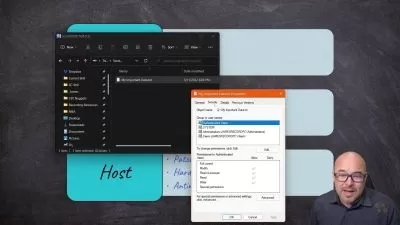ISC2 Certified Information Systems Security Professional (CISSP) (2024) Cert Prep
Mike Chapple
21:27:00
Description
In this course, instructor and cybersecurity expert Mike Chapple covers the entire set of information you need to know as you prepare for the ISC2 Certified Information Systems Security Professional (CISSP) certification. The CISSP is one of the most in-demand certifications for security professionals. Learn about security and risk management and asset security. Explore security architecture and engineering. Learn about communication and network security, as well as identity and access management (IAM). Go over security assessment, testing, and operations. Plus, gain valuable insights into software development security. This course gets your preparations for the CISSP exam off to a great start.
This course was created by Mike Chapple. We are pleased to host this training in our library.
More details
User Reviews
Rating
Mike Chapple
Instructor's Courses
Linkedin Learning
View courses Linkedin Learning- language english
- Training sessions 365
- duration 21:27:00
- English subtitles has
- Release Date 2024/06/22









